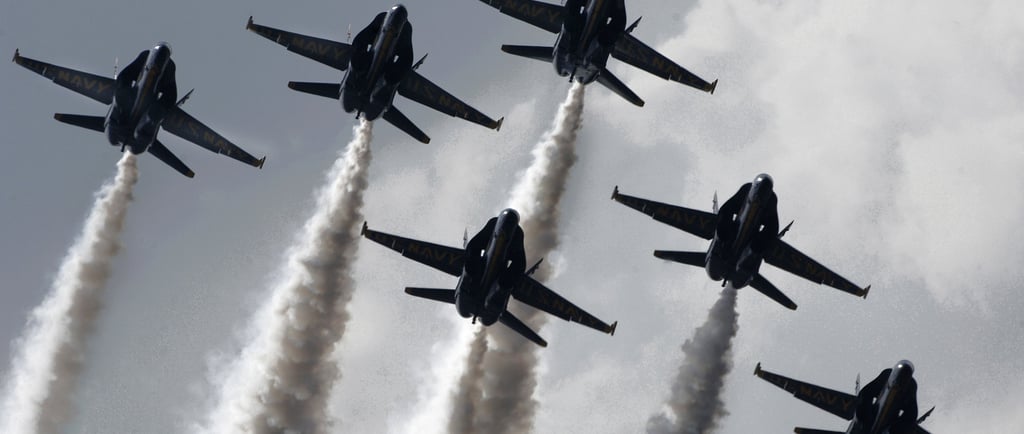The Blue Angels: The U.S. Navy’s Elite Flight Demonstration Squadron
For over 75 years, the Blue Angels have captivated audiences worldwide with their precision aerial maneuvers, dazzling formations, and high-speed demonstrations. As the United States Navy’s premier flight demonstration squadron, the Blue Angels represent the skill, discipline, and teamwork of naval aviation while inspiring future generations to pursue careers in the military.
Dr Edwards


A Legacy of Excellence
The Blue Angels were established on April 24, 1946, by Admiral Chester W. Nimitz, just months after the end of World War II. The goal was to maintain public interest in naval aviation and demonstrate the capabilities of the U.S. Navy’s fighter aircraft. The squadron’s first performance took place in June of that year, flying the Grumman F6F Hellcat. Over the decades, they have flown various aircraft, transitioning from the Hellcat to the Bearcat, Panther, Tiger, Phantom, and ultimately, their current jet—the F/A-18 Super Hornet.
The squadron is officially based at Naval Air Station (NAS) Pensacola, Florida, where they conduct winter training before embarking on a nationwide tour. From coast to coast, the Blue Angels perform before millions of spectators every year, showcasing the elite capabilities of naval aviators.
The Spectacle of Precision Flying
The Blue Angels are best known for their tight formations, precision maneuvers, and high-speed passes that push the limits of aerial performance. Some of their signature formations and stunts include:
The Diamond Formation – Four aircraft fly within 18 inches of each other, maintaining perfect symmetry as they perform loops and rolls.
The Opposing Knife-Edge Pass – Two jets approach from opposite directions at speeds over 700 mph, crossing within mere feet of each other.
The Fleur-de-Lis – A breathtaking maneuver in which the aircraft split apart midair, creating an elegant pattern in the sky.
The Low Transition Takeoff – A jet lifts off and stays just feet above the runway before shooting skyward in a near-vertical climb.
These stunts require extreme skill, coordination, and trust among pilots, all of whom are hand-selected from the U.S. Navy and Marine Corps.
Training and Selection: Only the Best
Becoming a Blue Angel is one of the most prestigious honors in naval aviation. Candidates must have at least 1,250 tactical jet flight hours and an exceptional record of performance. Each year, only a handful of pilots and support personnel are chosen to join the squadron.
Once selected, pilots undergo rigorous training, practicing maneuvers multiple times per day to perfect their timing, spacing, and execution. Every movement is choreographed down to the second, ensuring seamless synchronization during live performances.
The Mission Beyond Airshows
While airshow performances are their most visible role, the Blue Angels also serve as ambassadors for the U.S. Navy and Marine Corps. They engage with communities, visit schools, and meet with aspiring pilots to foster interest in aviation and military service.
Additionally, they conduct flyovers for major national events, including the Super Bowl, presidential inaugurations, and military ceremonies, further cementing their role as symbols of American pride and excellence.
The Thrill of Seeing Them Live
Watching the Blue Angels perform is an unforgettable experience. The roar of the Super Hornets, the precision of their formations, and the sheer skill on display leave audiences in awe. Each year, millions attend airshows across the country, hoping to witness firsthand the pinnacle of aerial performance.
For those interested in catching a show, the Blue Angels release an annual schedule detailing their tour locations. Whether it’s your first time or your tenth, the spectacle never gets old.
Conclusion
The Blue Angels are more than just a flight demonstration team; they are a testament to the skill, discipline, and dedication of the U.S. Navy and Marine Corps aviation community. Their performances inspire awe, honor military aviation heritage, and encourage future generations to aim high—both in the skies and in life.
So, the next time you hear the thunder of jet engines overhead, look up—you might just witness a legendary Blue Angels performance in the making.